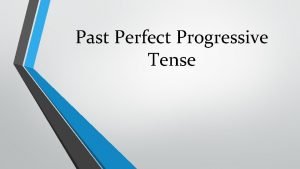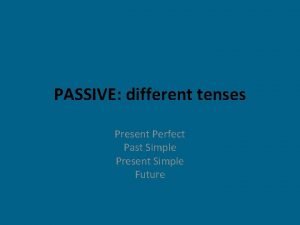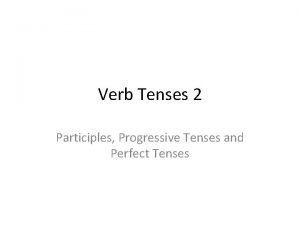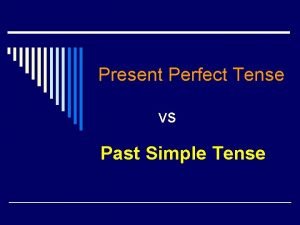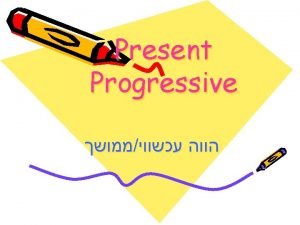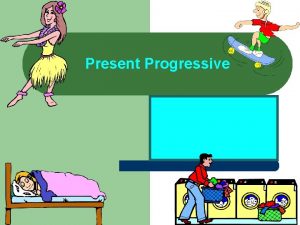Perfect and Progressive Form 1 Past and present











- Slides: 11

Perfect and Progressive Form 1. Past and present tense (simple) 2. Perfect form of verbs 3. Progressive form of verbs: present and past

Verbs indicate that someone or something is doing, feeling or being. verbs The donkey pulls the cart. Ahmed delivers gas. He is hungry. I’d absolutely love to visit Cairo. Usually verbs have the name of a person or thing or a pronoun in front of them. Can you spot these?

Verbs have a tense. They can tell us when the action happened. Ahmed started his work early. In the past or in the present. They rest by the wall. Write a sentence in the present tense. They saw the lunch cart. They see the lunch cart. Example Rewrite it in the past tense.

brayed For regular verbs we add ed to show that an action is in the past and complete. watched The donkey pulled the cart until lunchtime. waited plodded trotted delivered listened Irregular verbs take different forms when showing past tense; we learn them through hearing them used. found caught ate was

Perfect Form The perfect form is created by using the present or past tense of ‘have’ with the past participle of the verb. I have journeyed. He has taught me how to work. Ahmed has shared his secret.

Perfect form The perfect form of the past tense suggests that still affecting the present. a past action is still affecting the present. Simple past Perfect form My father told me. My father has told me. He showed me. He has shown me. He took me to He has taken me to each place. He told me in the past and I still think about it now. He showed me in the past and I still can picture him now. He took me to each place in the past and I still remember when I go there now.

Perfect form There are two forms of the perfect form of the past tense. Present perfect Past perfect The boy has finished work. The boy had finished work. I have told my secret. I had told my secret. Ahmed has enjoyed his day. Ahmed had enjoyed his day. In the past, he had finished and, in the past, he is still finished. In the past, I told my secret and, in the past, it is still told. In the past, Ahmed enjoyed the day and, in the past, he still enjoys it.

Perfect form of verbs: present and past perfect Simple past Present perfect Past perfect He talked He has talked He had talked It rattled It has rattled It had rattled Hassan laughed Hassan has laughed Hassan had laughed I watched I have watched I had watched

The progressive form is continuous. It suggests that the action continues, for a period of time, All day, I was waiting for the evening to come. or continues at the time something else happens or happened. I was waiting for the evening to come while I worked. This can be in the present (happening now) or in the past (happened then).

Progressive form of verbs: present and past progressive Present progressive Past progressive He walks He is walking He was walking It mingles It is mingling It was mingling The boy smiles The boy is smiling The boy was smiling I stare I am staring I was staring

Explore more Hamilton Trust Learning Materials at https: //wrht. org. uk/hamilton/.
 Present perfect simple
Present perfect simple Present perfect progressive passive
Present perfect progressive passive Past perfect progressive הסבר
Past perfect progressive הסבר Perfect past progressive
Perfect past progressive Past perfect continuous past continuous
Past perfect continuous past continuous Present and past simple and continuous
Present and past simple and continuous Simple past and present progressive
Simple past and present progressive Present simple passive gradjenje
Present simple passive gradjenje Simple present present perfect present progressive noredink
Simple present present perfect present progressive noredink He has ha hemos
He has ha hemos Present progressive passive form
Present progressive passive form Past simple present perfect present perfect continuous
Past simple present perfect present perfect continuous


